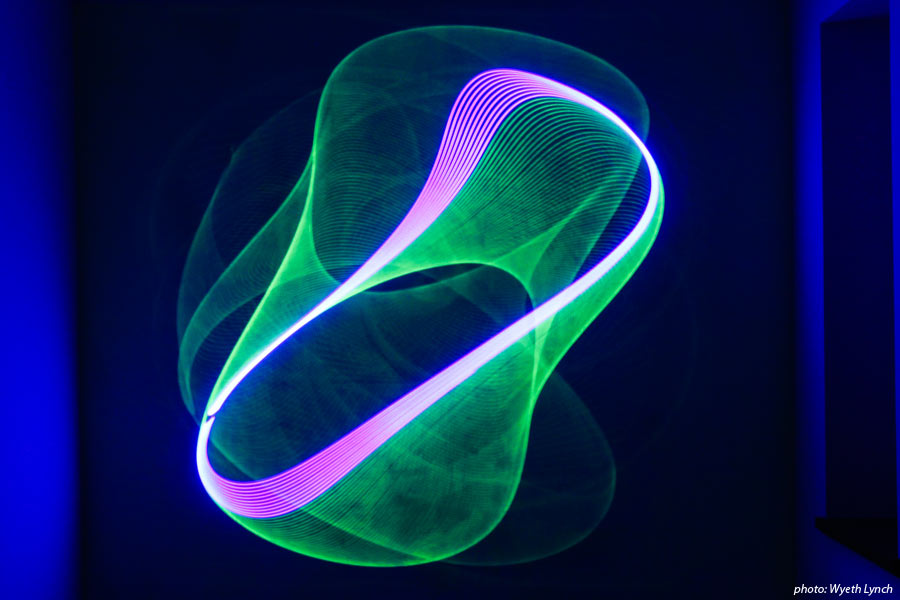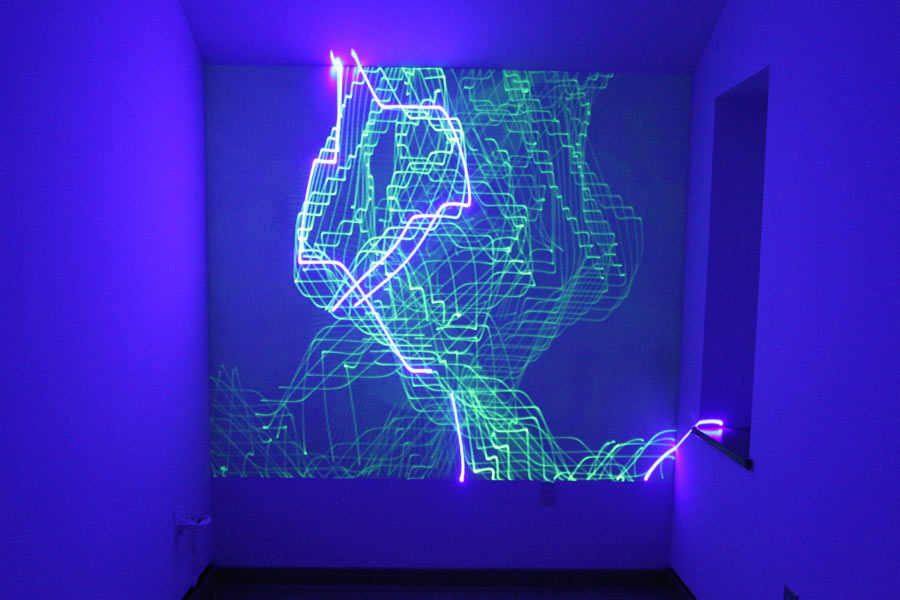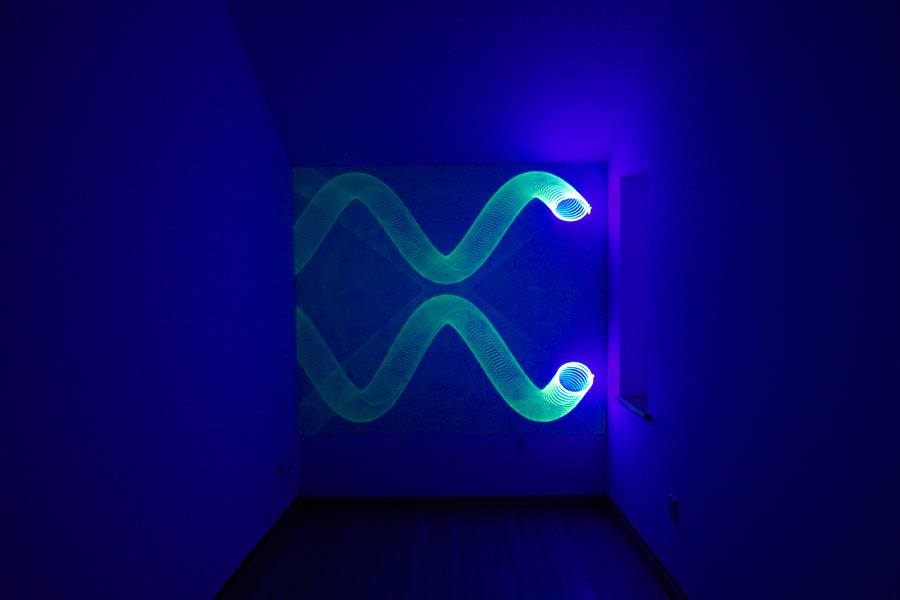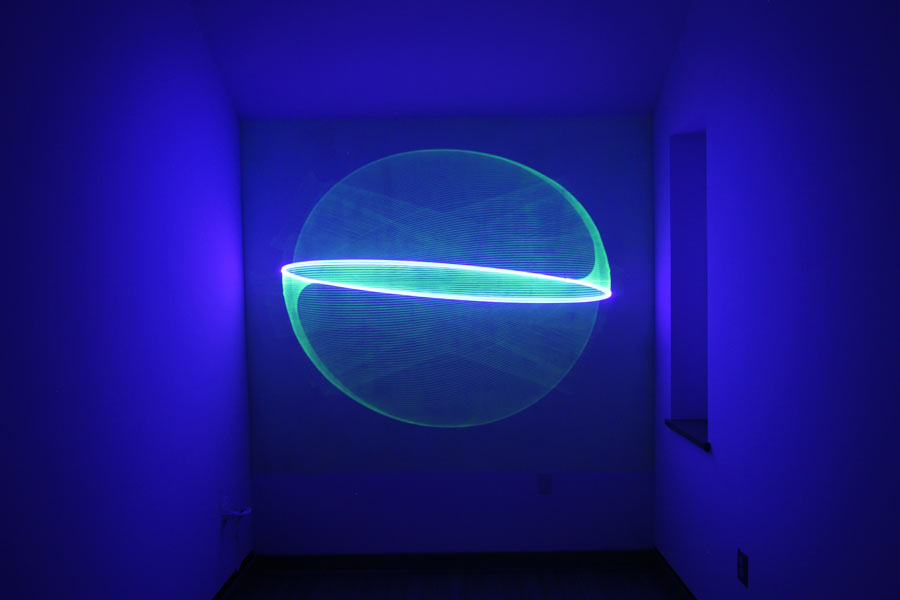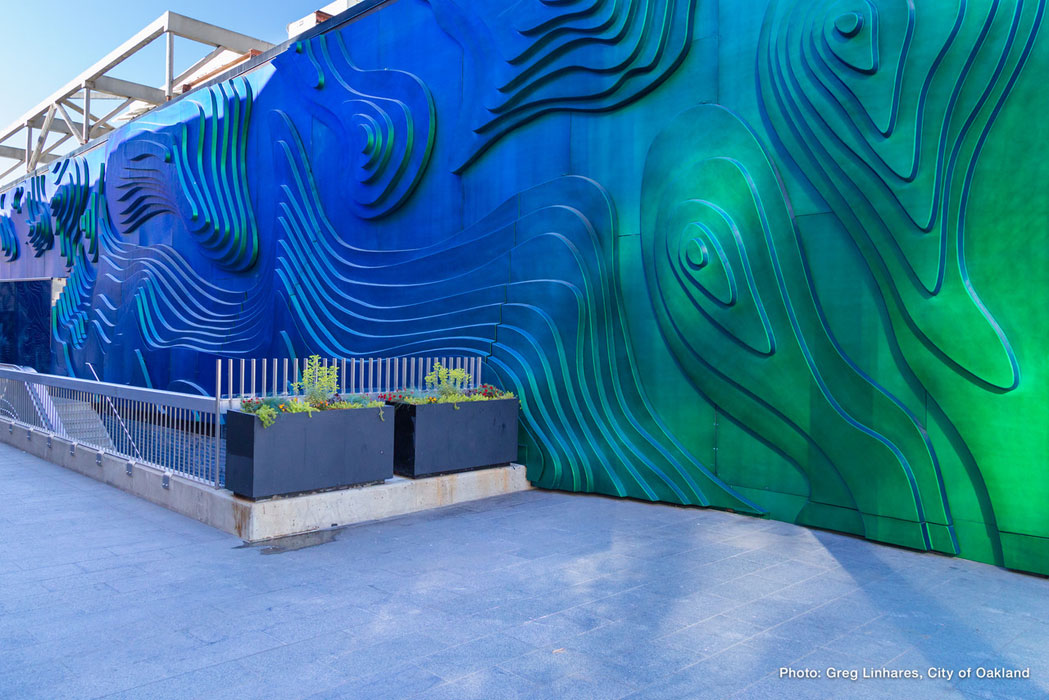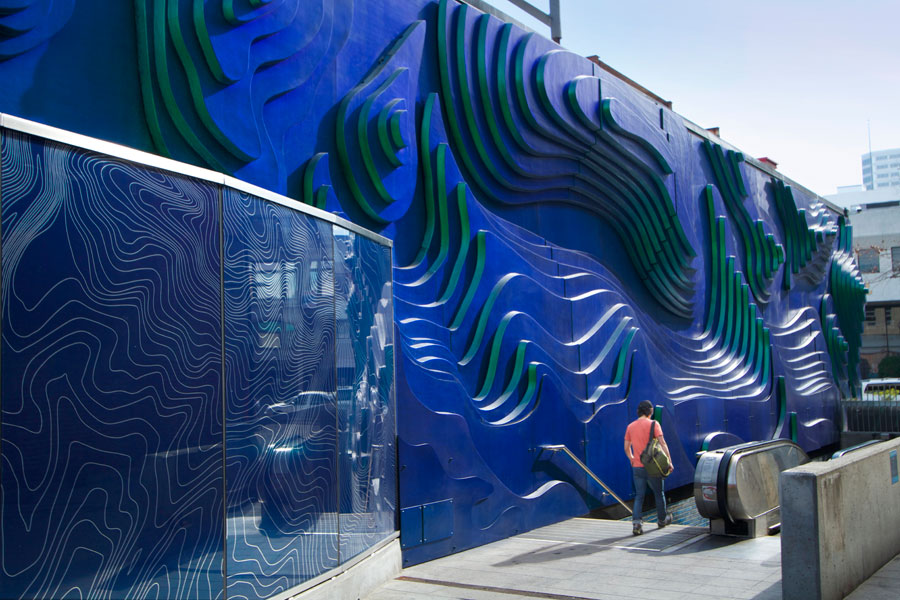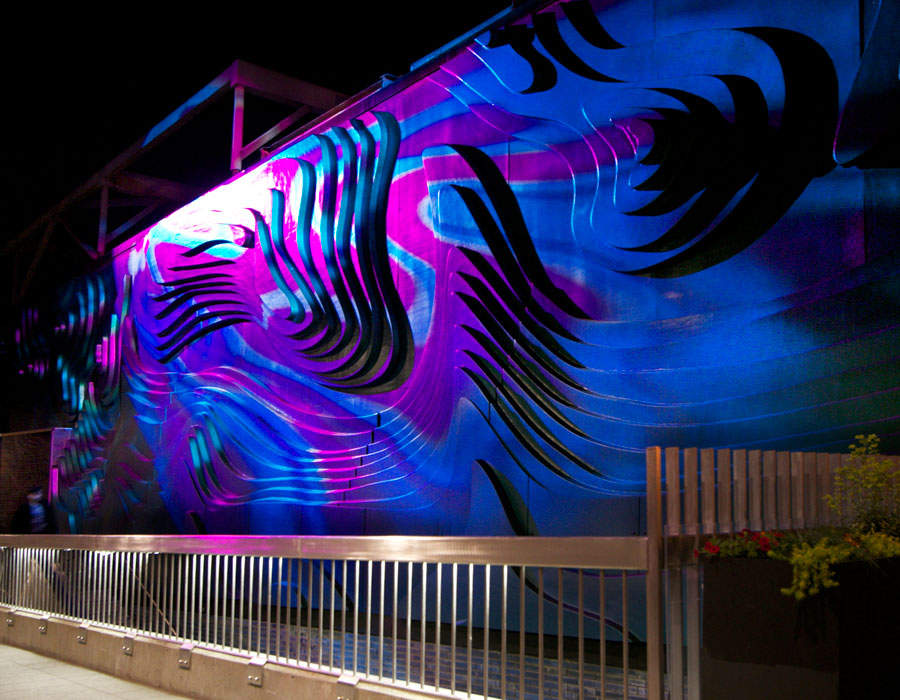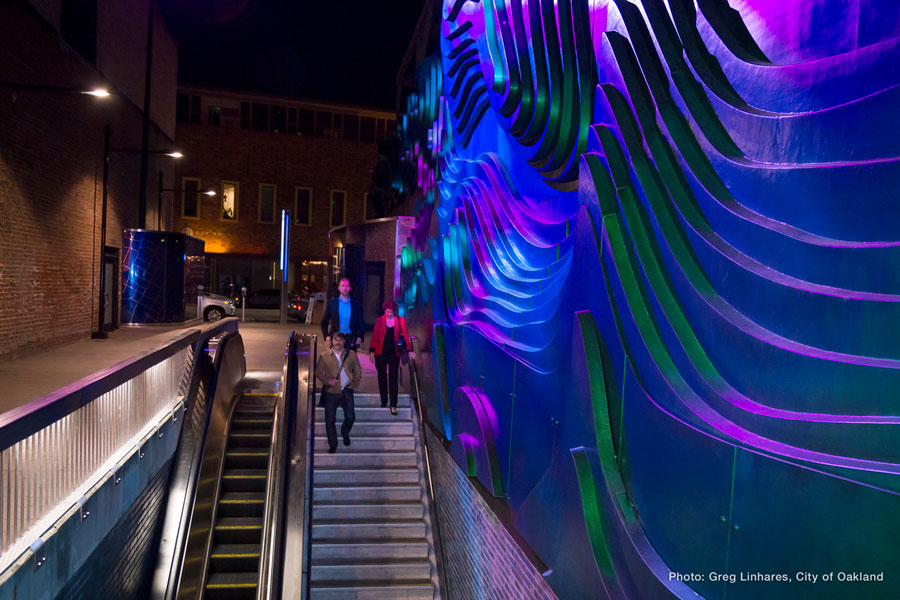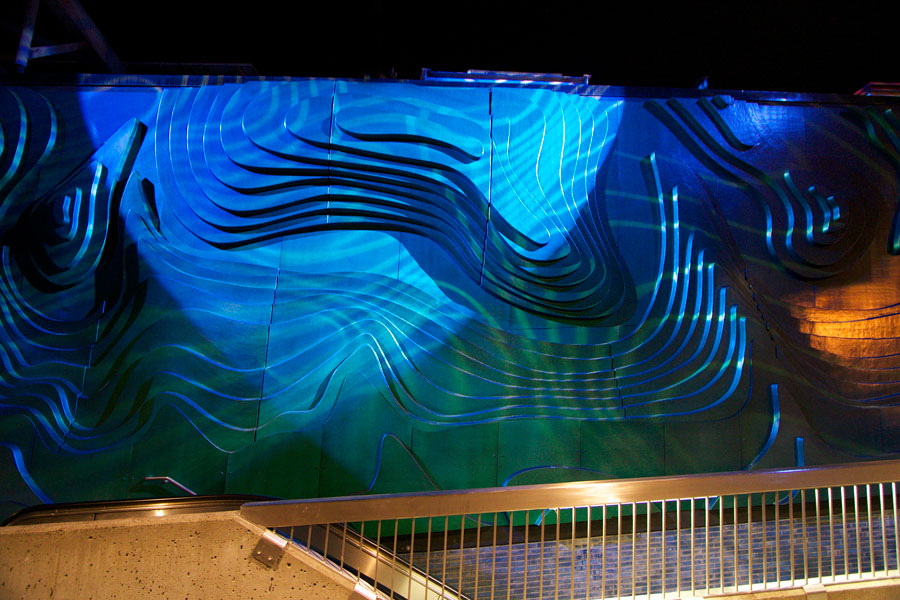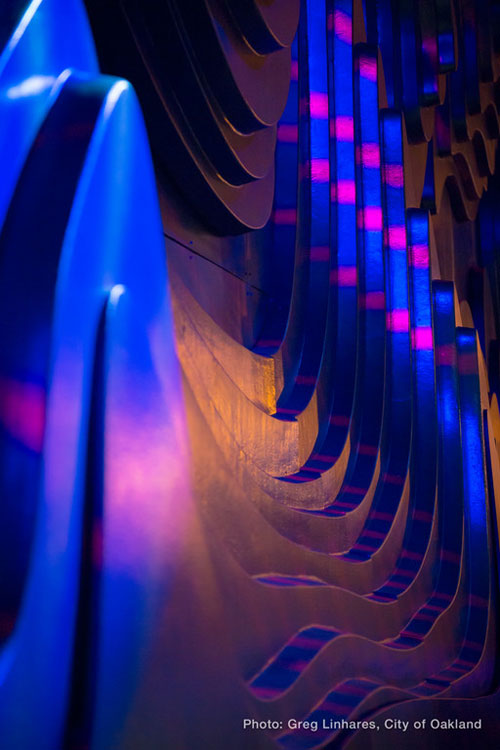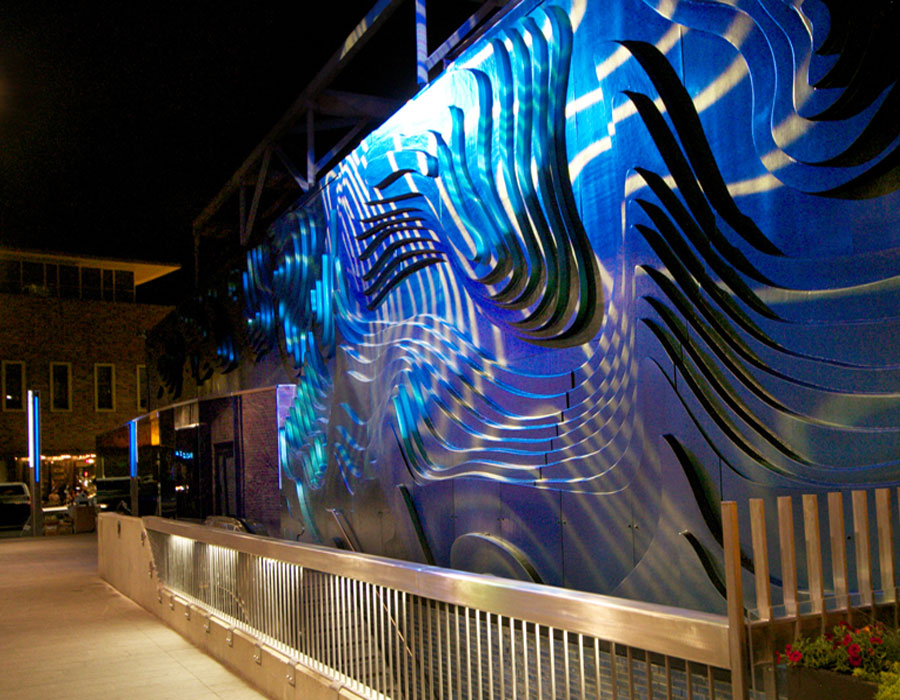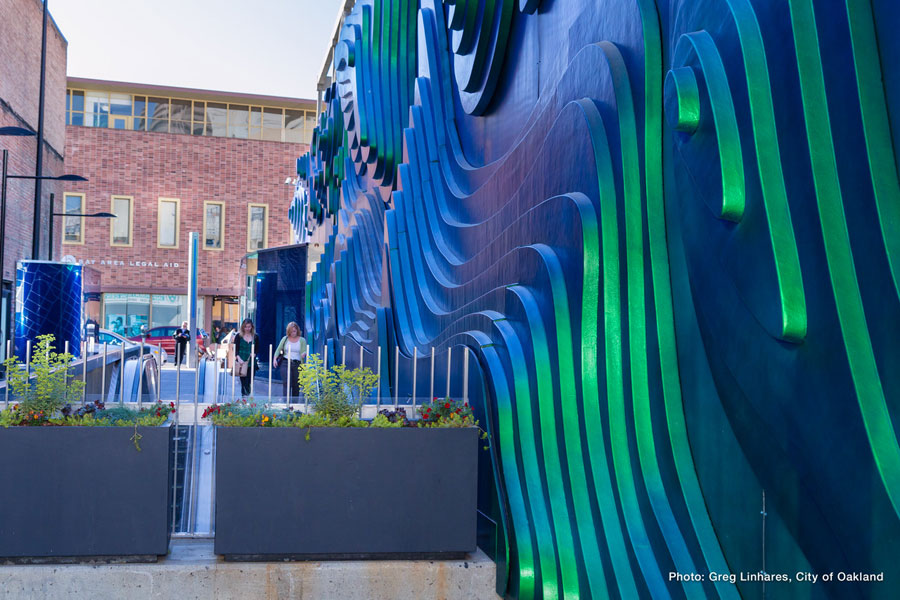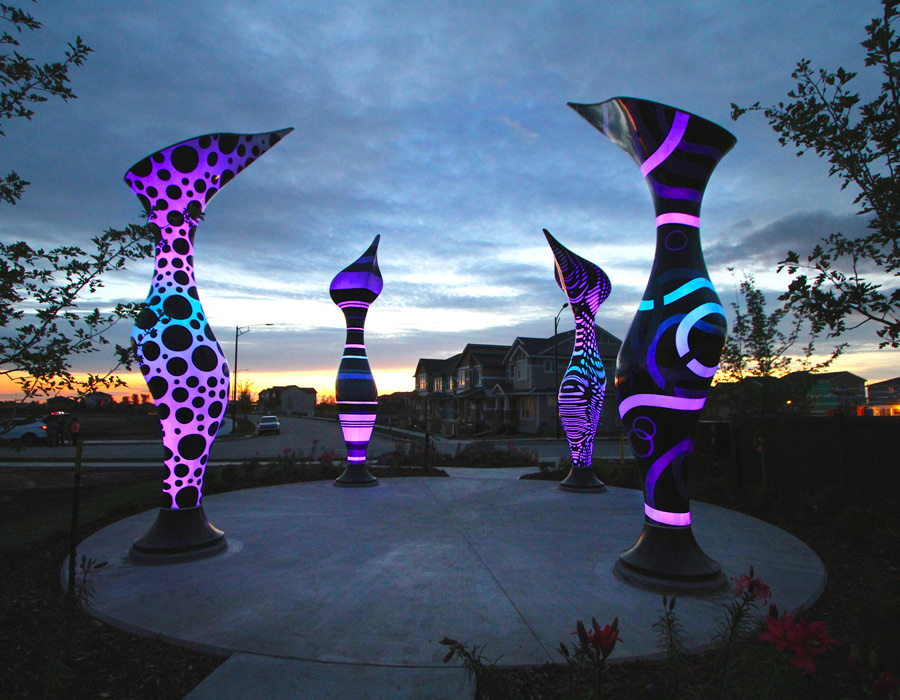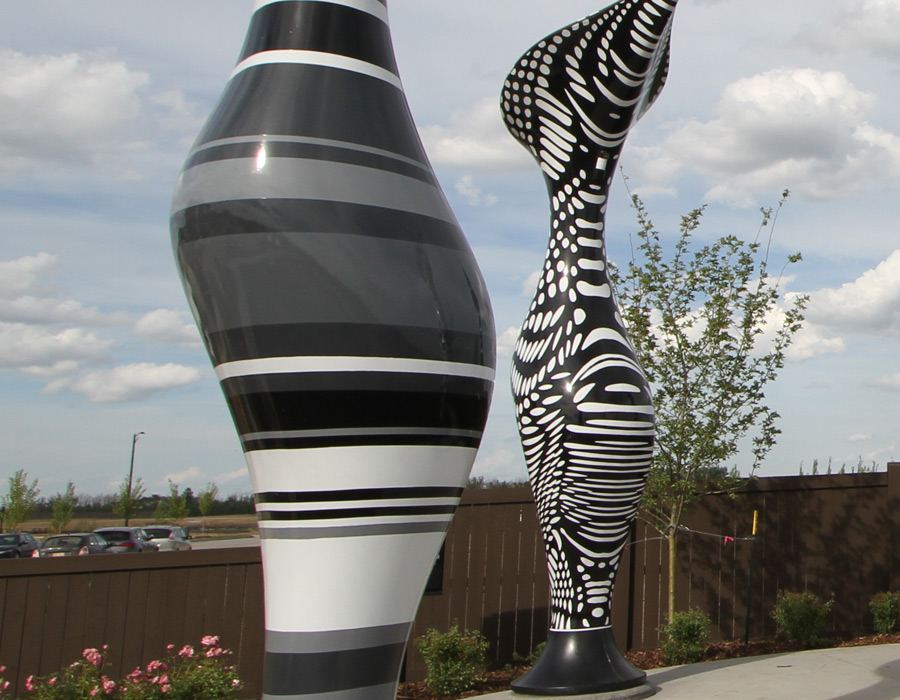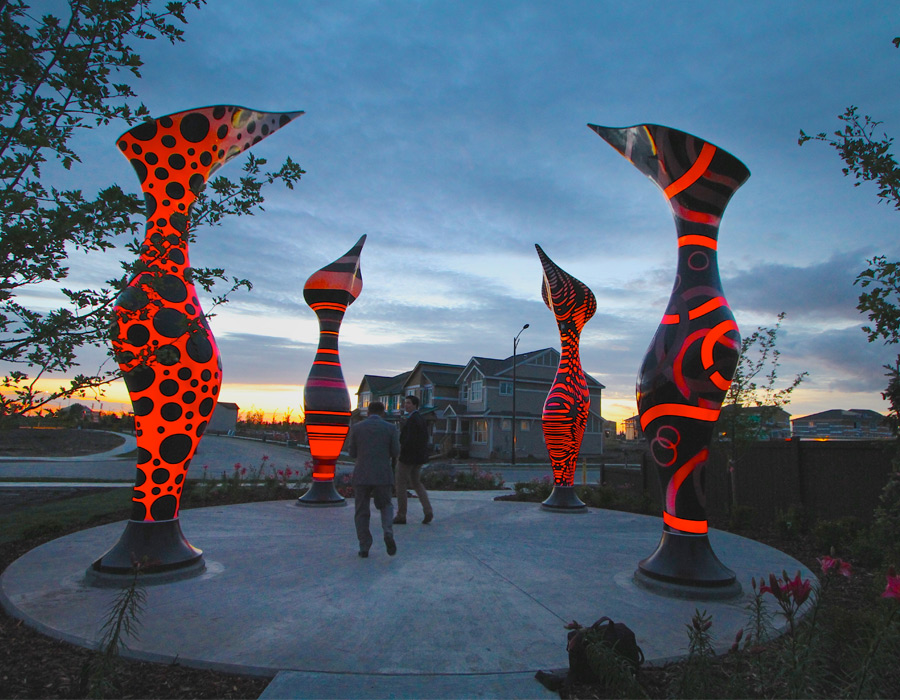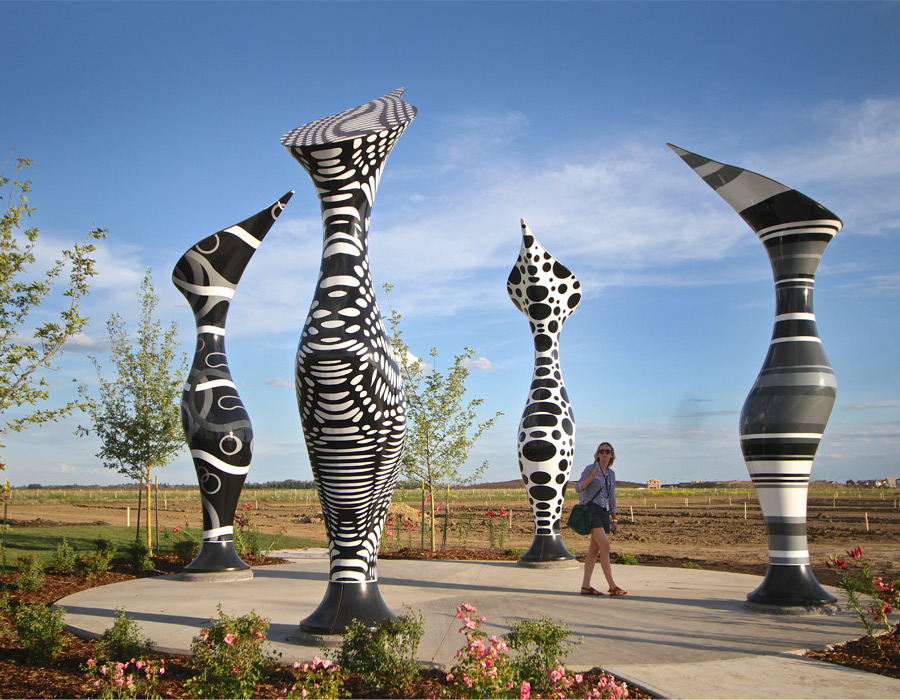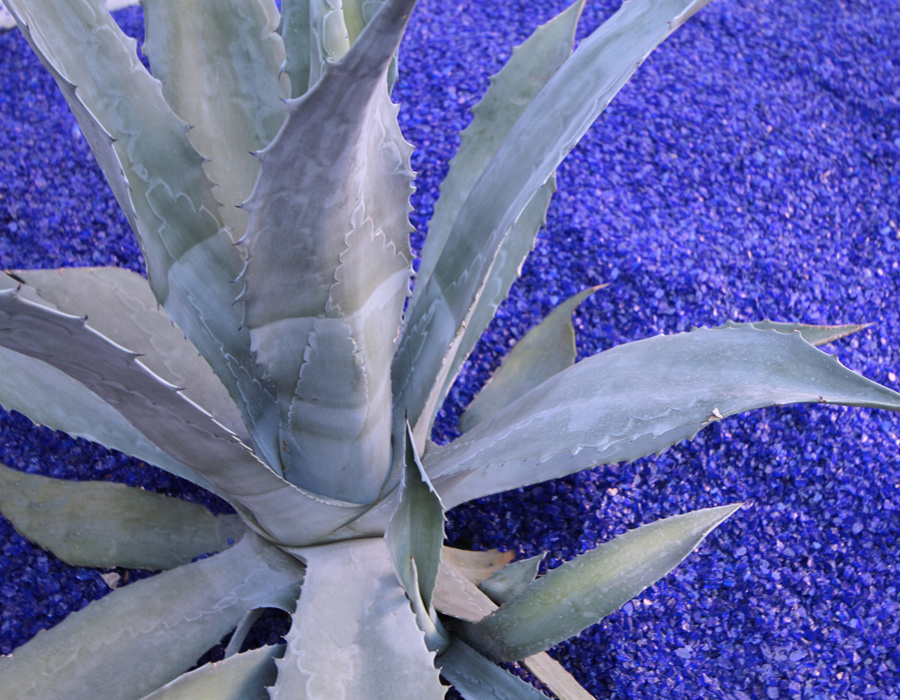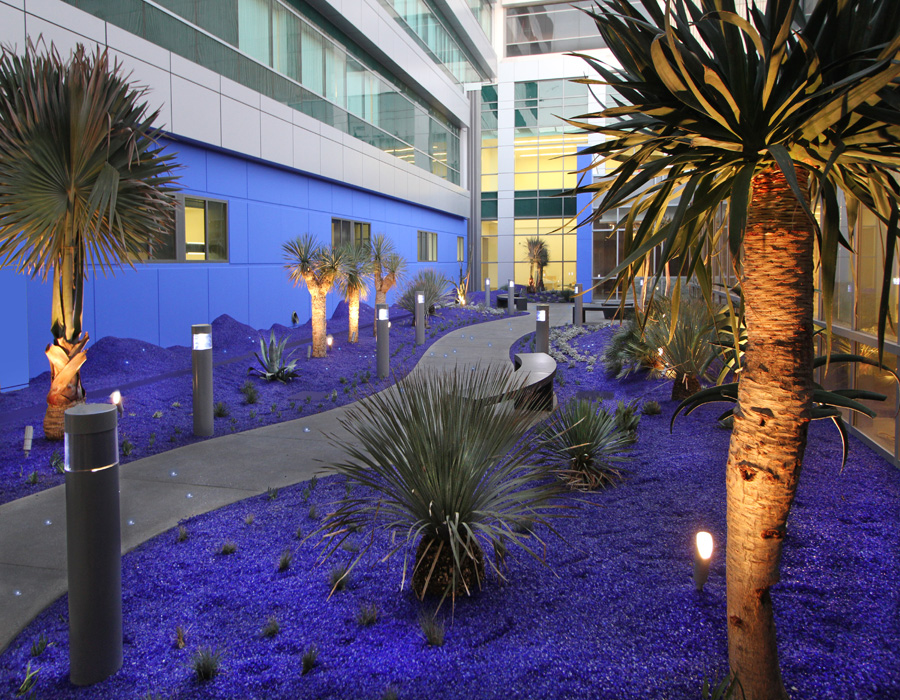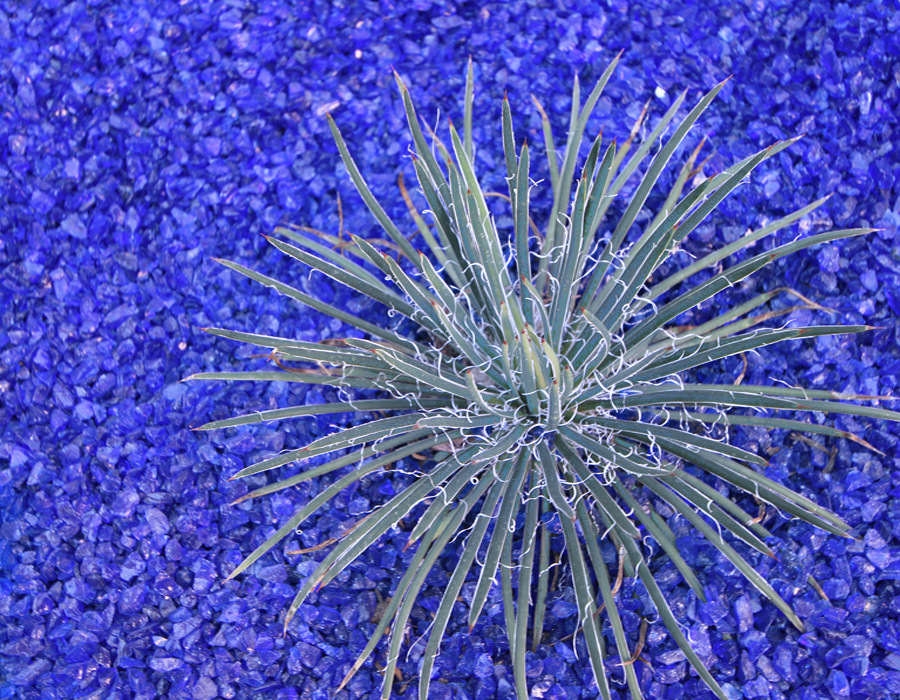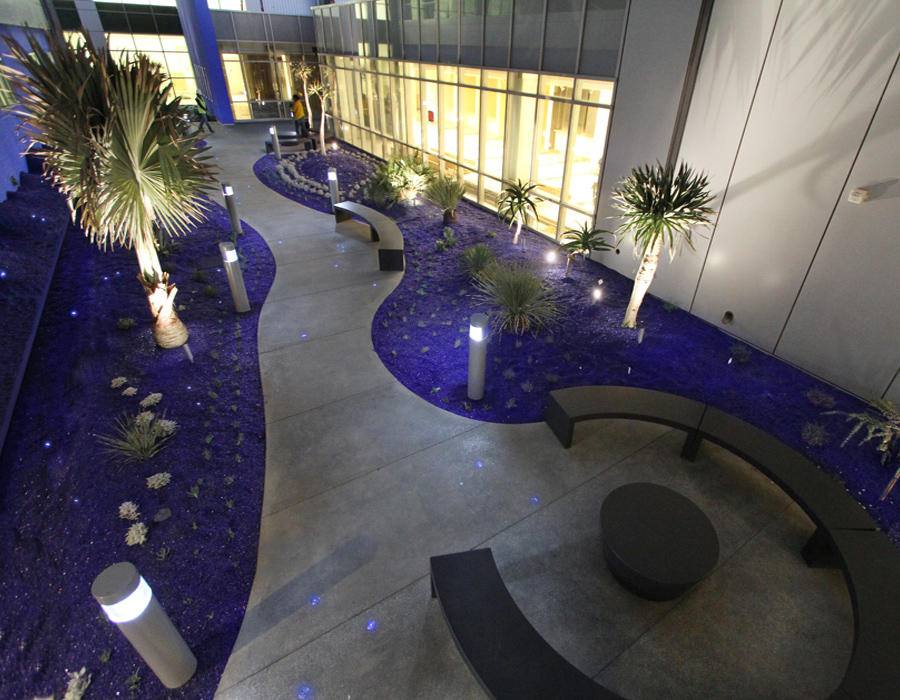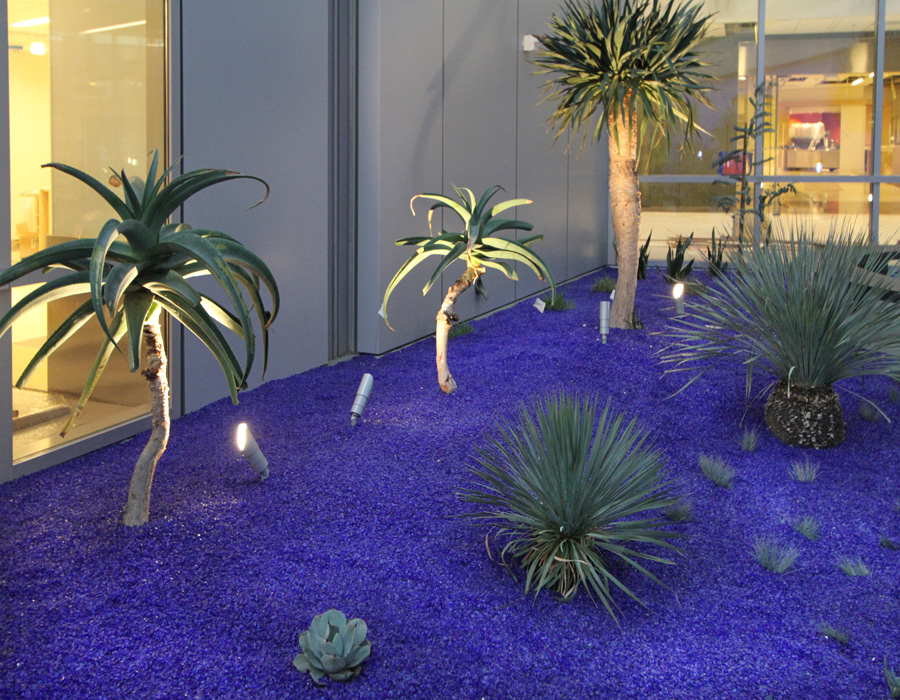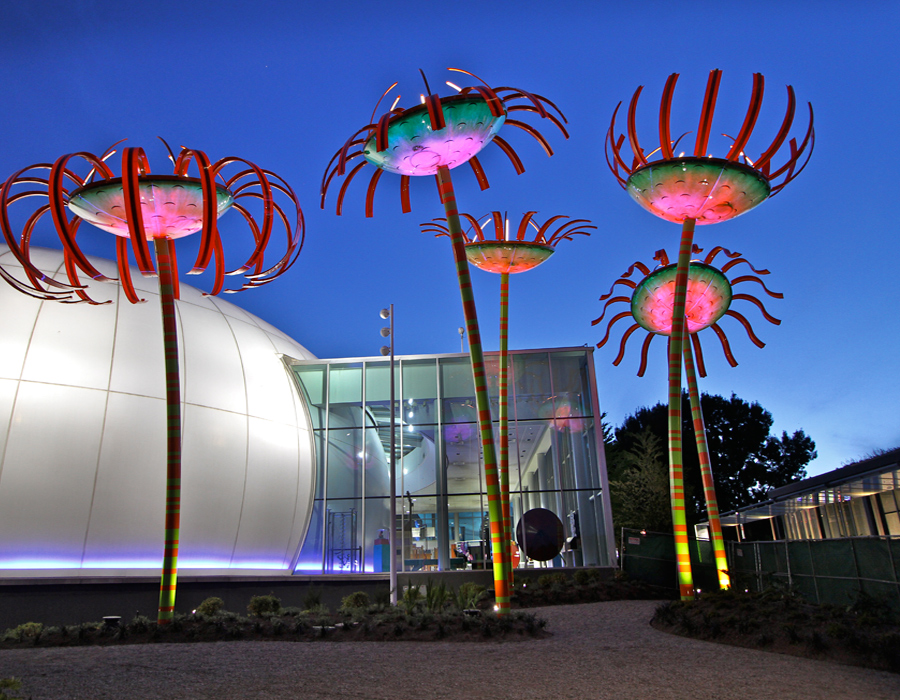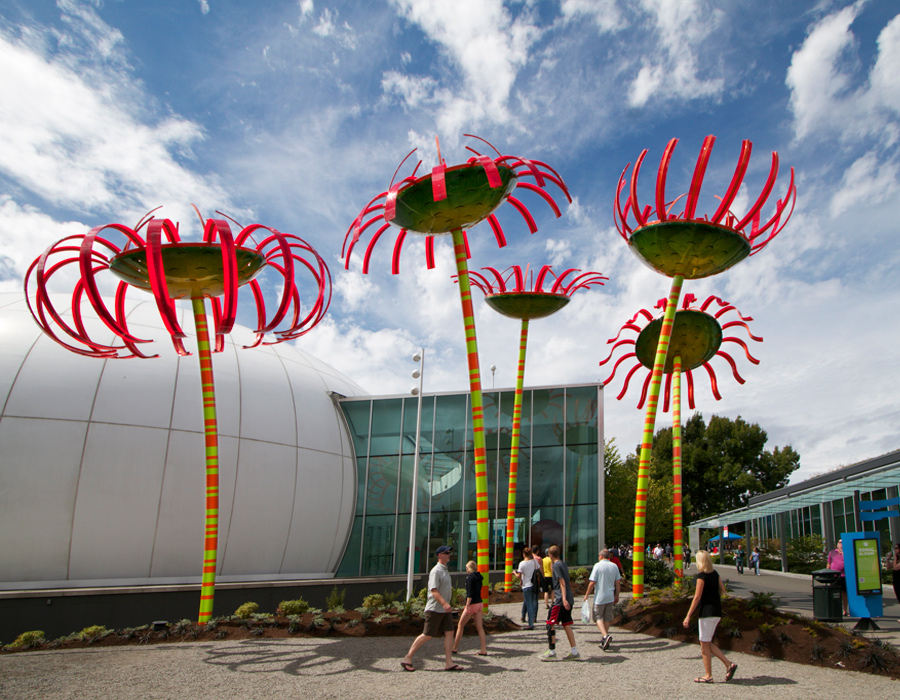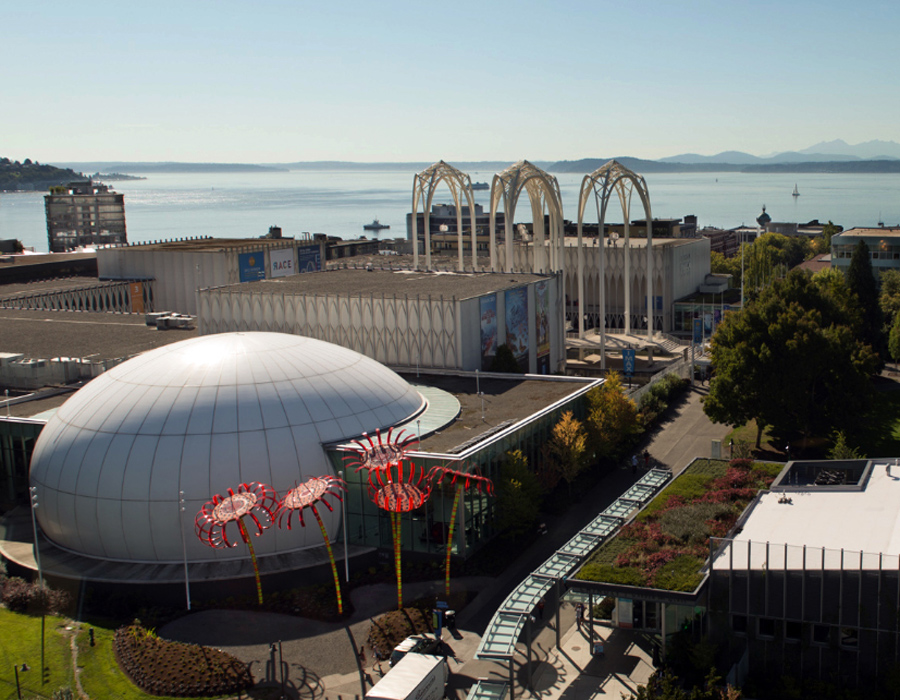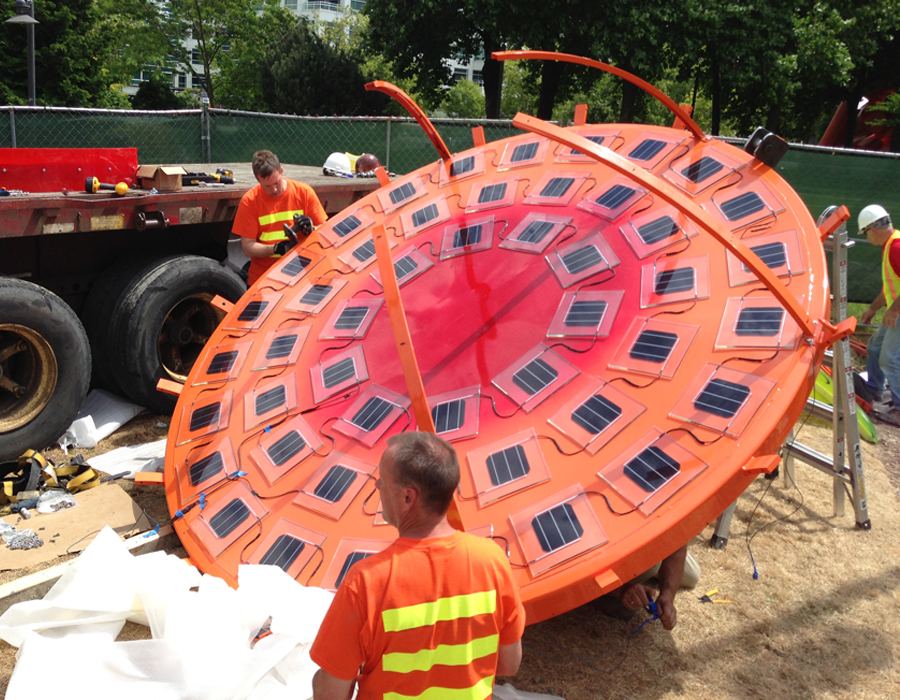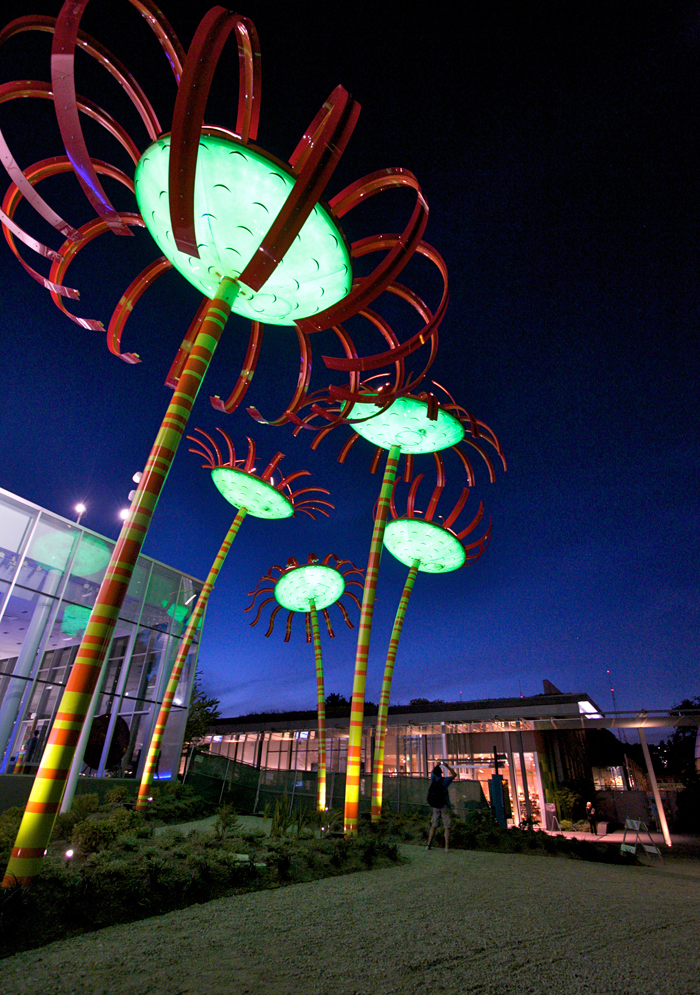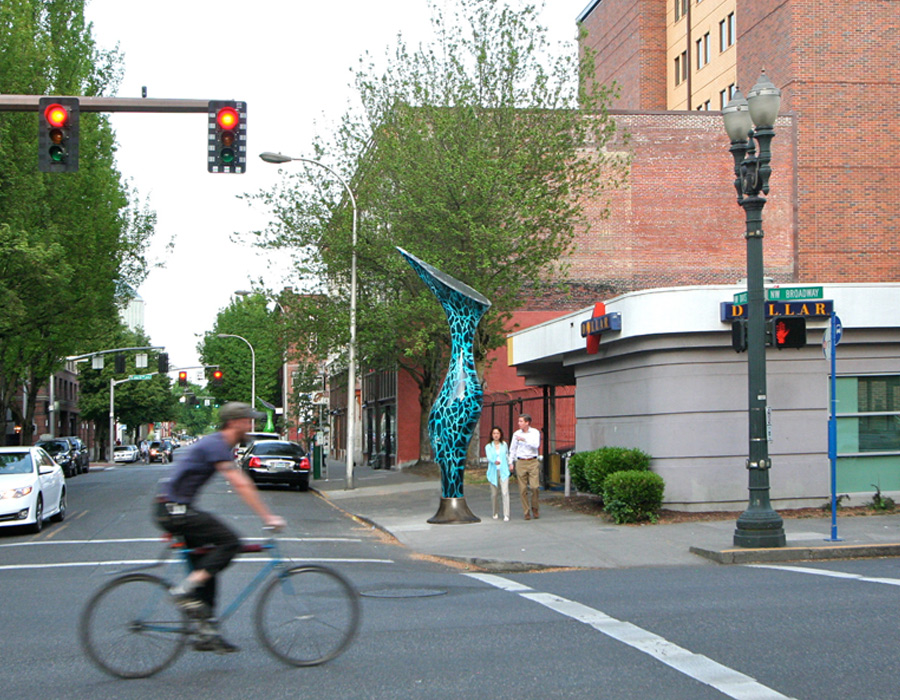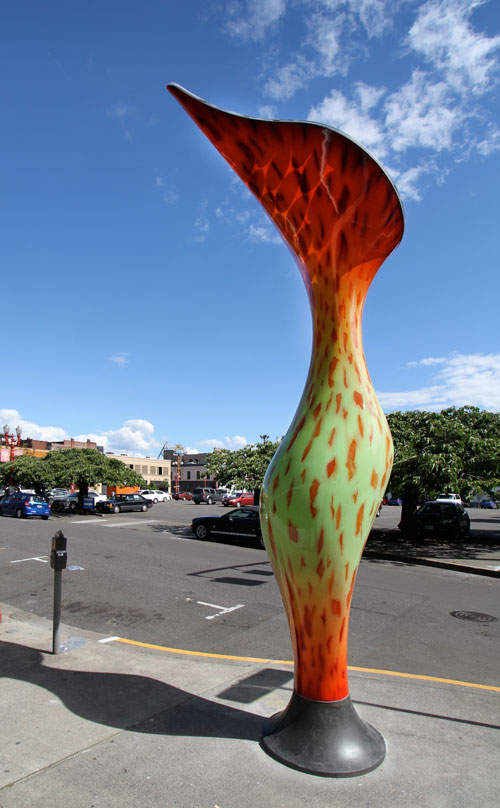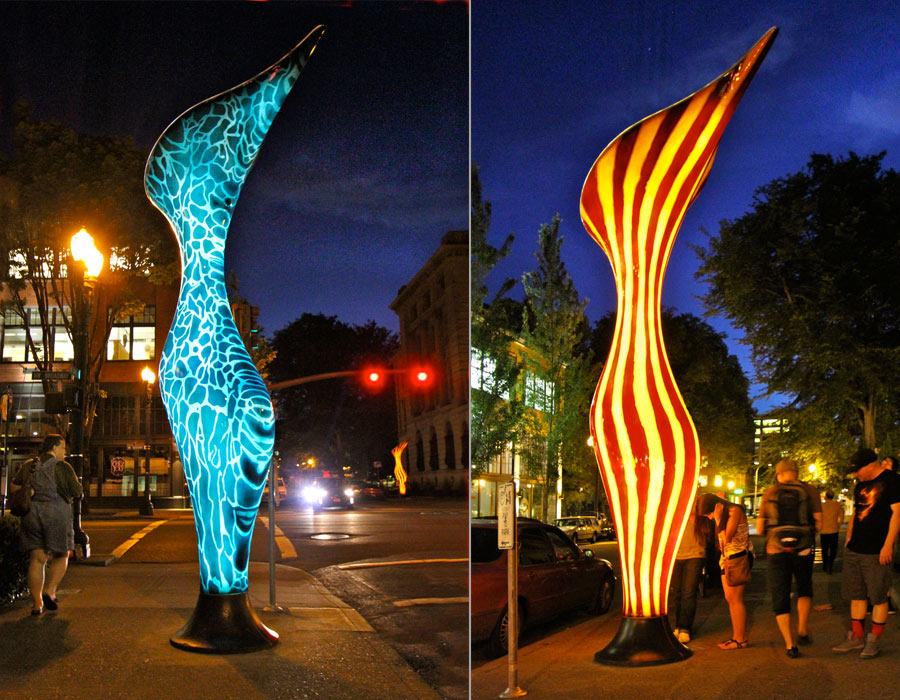Rivers Edge Park, Council Bluffs Iowa
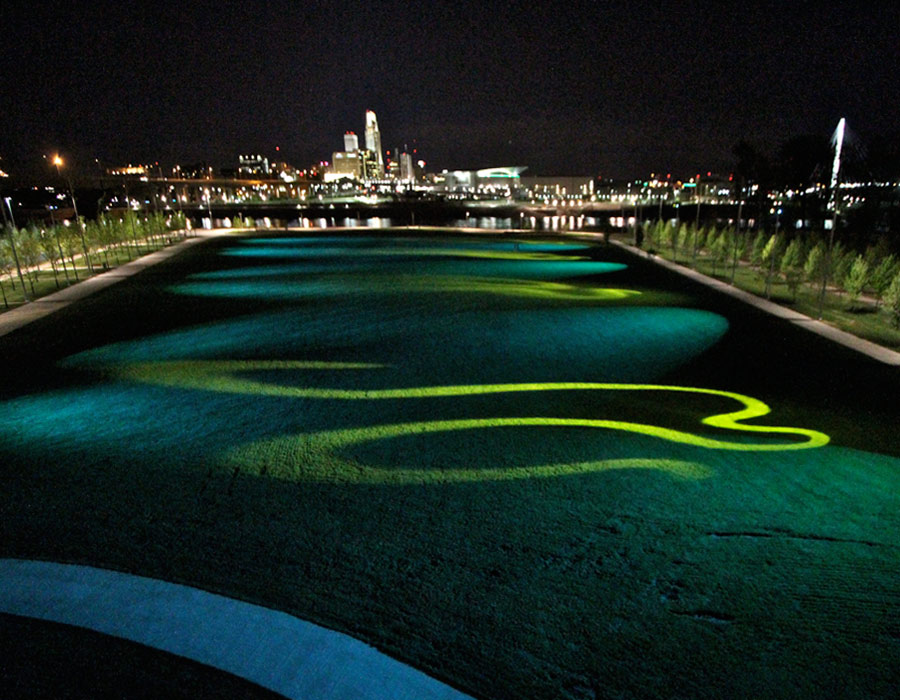
Lawn, robotic lighting fixtures, dynamic pattern projectors, Infrared camera, doplar radar sensors, custom interactive software and hardware.
Originally inspired by the great European baroque knot gardens, this massive 5-acre Great Lawn is the canvas for a giant ever-changing light environment that echoes patterns of the past and updates them for the future. Utilizing powerful dynamic and robotic lighting fixtures, the lawn is activated every half hour after dark.
Within each sequence, there is a “show” mode and an “interactive” mode. Please see below for more details.
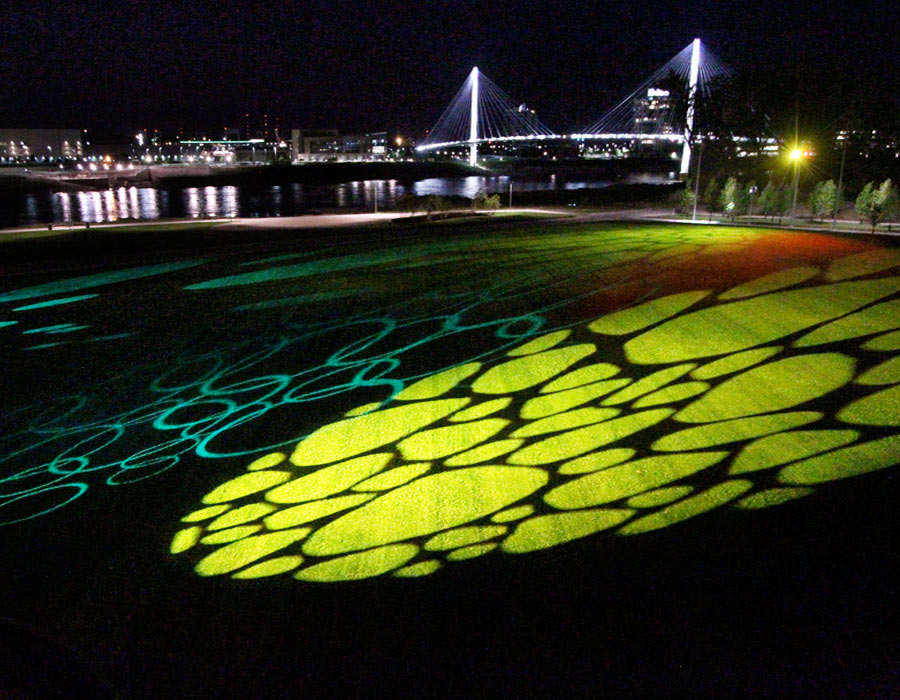
Some of the light patterns are inspired by slowly spinning “ice flows” as they break up and rotate while move down the river.
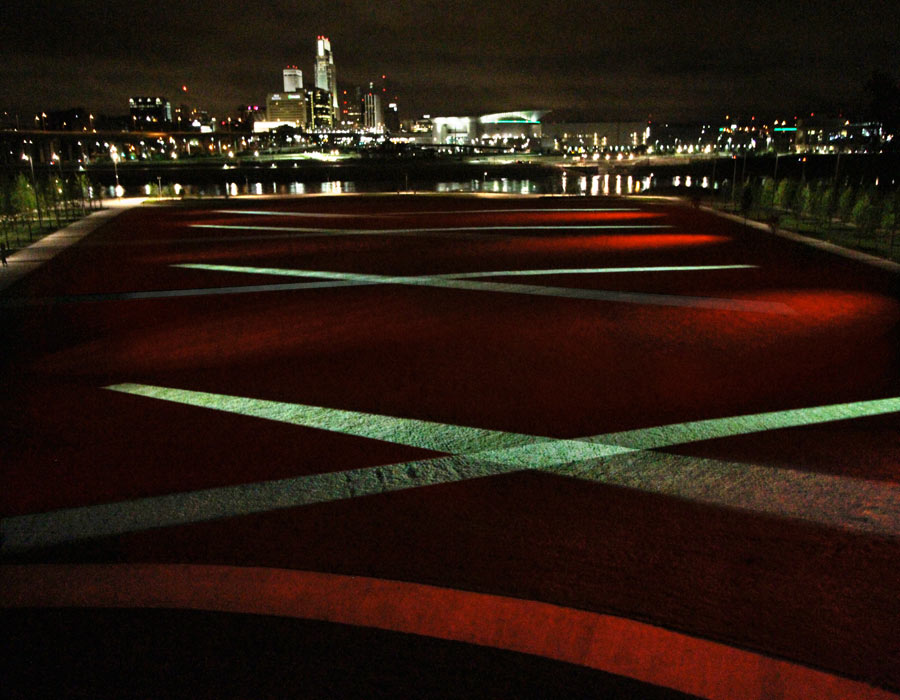
A dance of rotating white lines breaks up the lawn in geometric patterning inspired by 18th century French formal gardens.

Each pattern is dynamic: slowly spinning, zooming in or out and changing sharpness and color
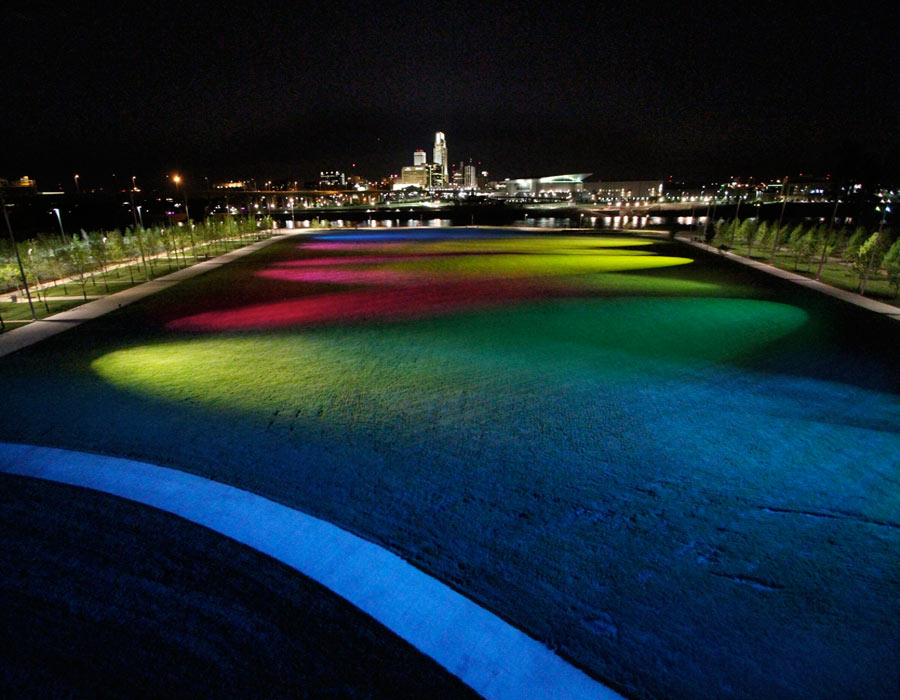
Chasing rainbow colors for a few seconds indicates it is time for the “interactive” part of the event. Come onto the lawn and the lights will play with you.
In addition to the choreographed sequences, there is a complex interactive lighting component to the project that will track and “play” with people through a series of simple intuitive games as part of every “event”. Tracked by infra-red cameras and radar detectors, the locations and gestures of the people on the lawn in front of the stadium seating will control the lighting in some instances, and in others it will track them similar to follow spots at an ice skating event.
INTERACTIVE COMPONENTS
1. SENSING: When the general illumination park lights are on, radar detectors sense motion in the corners of the park and direct the robotic fixtures into those areas projecting individually selected spinning patterns.
2. GAMES: The field covered by a chasing rainbow of colors indicates it is time for the beginning of the interactive game section. Each half hour “show” has 2 randomly selected games that play for 3 or 6 minutes.
Each half hour event plays 2 randomly selected games:
The games are:
a. Stealing Dorothy Hamill’s Spotlight: 4 robotic lights randomly select one person to follow in on the field. The game is to figure out how to trick the robot and steal the spotlight from the person selected.
b. Hot-Cold: a blue spotlight is turned on in the field. As people move towards the spotlight the closest person to the spotlight is tracked and their position changes the color of the spotlight- changing the color from blue through all the different colors until it turns red when you jump onto the spotlight. Once you are on it, the “prize” is flashing the entire lawn through a series of colors before throwing the spotlight into another random location and starting again.
c. Cat Laser Pointer: a small green spot intelligently dances and doges the people who attempt to catch it.
d. Yellow Spot Blue Spot: out of all the people on the lawn, the computer selects random 2 people giving each a different colored spotlight. Can you trick the computer into switching followspot colors as it follows you around the field?
Easter Eggs: the name originates from secret animations and videos incorporated into software that are only revealed if you know the secret keystrokes. Our “Easter Eggs” are a series of gestures that will set off some brief visual “prizes” during the interactive game sequence times for “people in the know”.
a. Jump: if more than 55% of the people on the active lawn area jump up and down together then it will cause all the lights in the field to blink on and off like people jumping.
b. Flash Mob: if more than 55% of the people on the active lawn run in and huddle then break out- it will cause all the lights on the lawn to “go crazy” and swirl around for a few seconds.
c. Run for the River: if there more than 55% of the people on the active lawn begin at the curving sidewalk and at one time run towards the river, the whole lawn will ripple in colors of blue, white and teal.

Robotic Searchlights play “Steal Dorothy Hamill’s Spotlight” with park users during an “Interactive Sequence”.
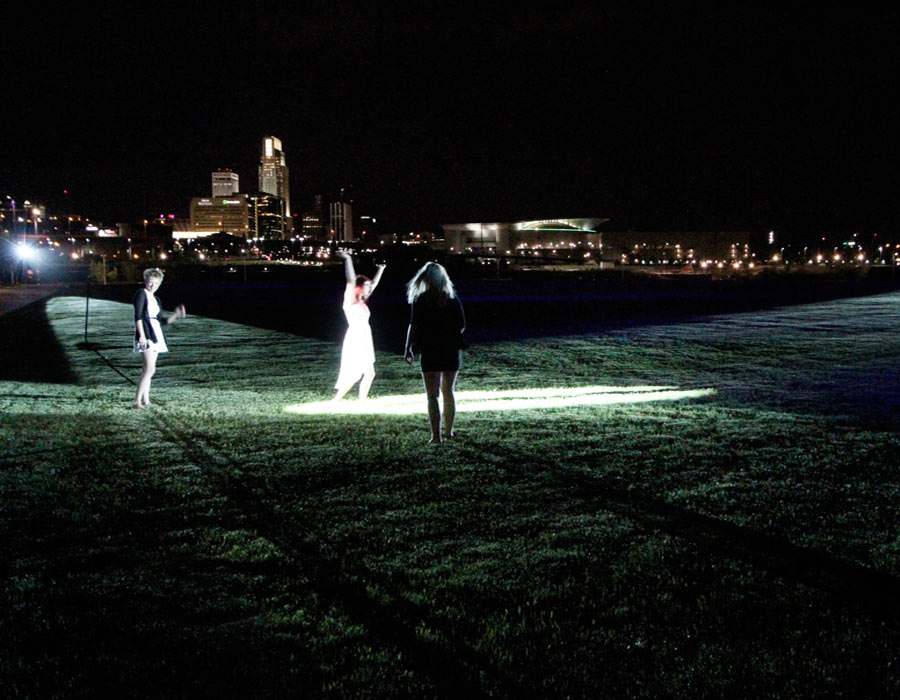
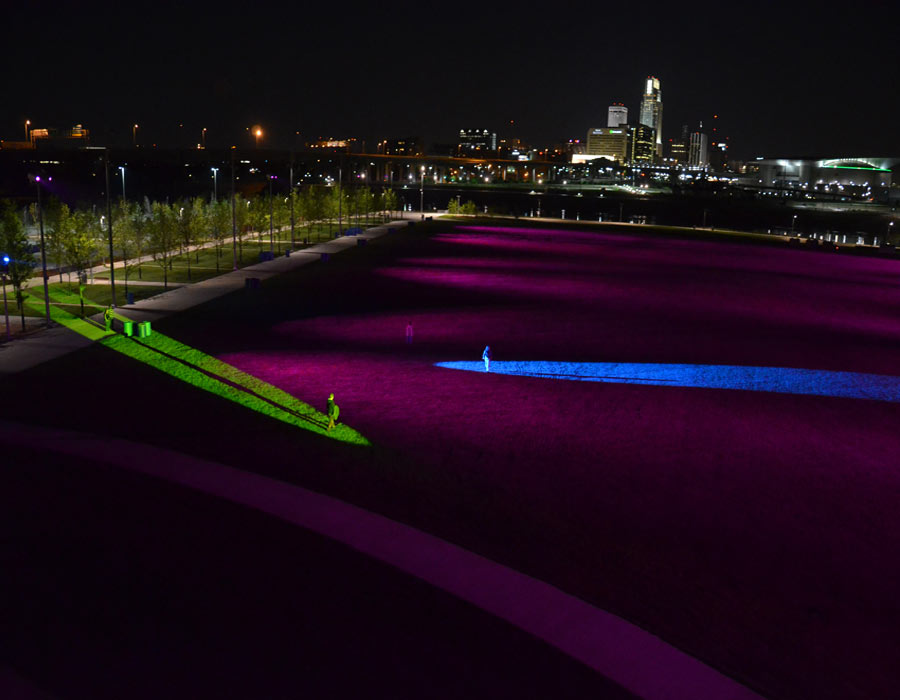
4 people playing Yellow Spot- Blue Spot
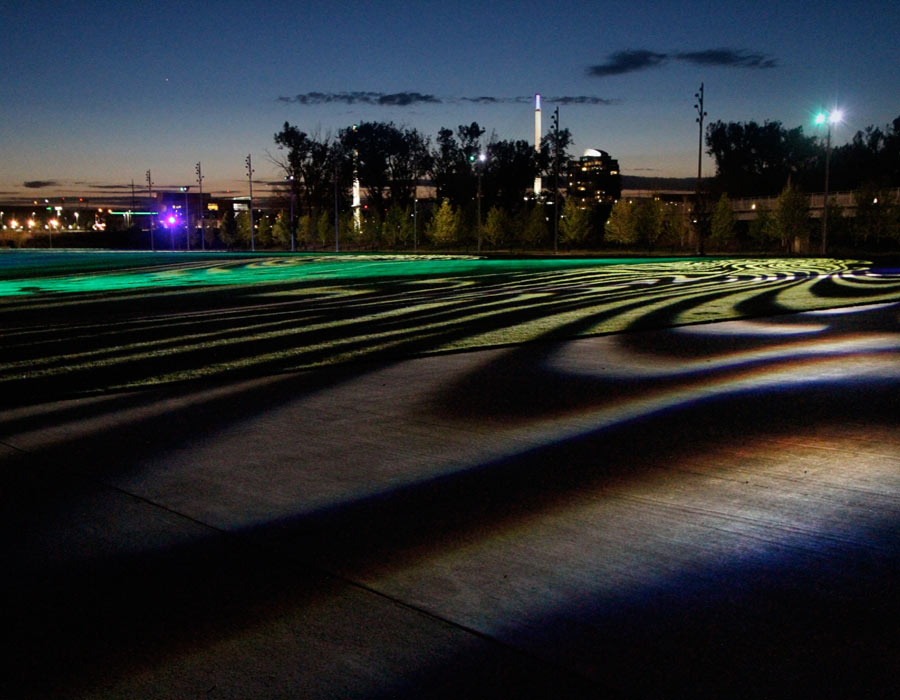


Stadium seating as well as the great lawn become a dynamic projection surface for the robotic lighting fixtures
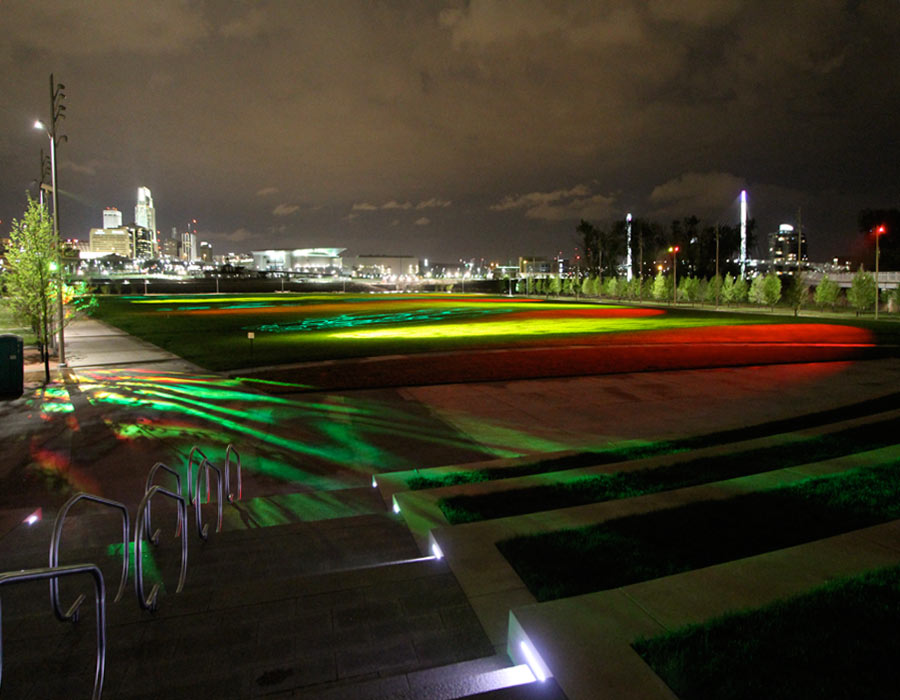
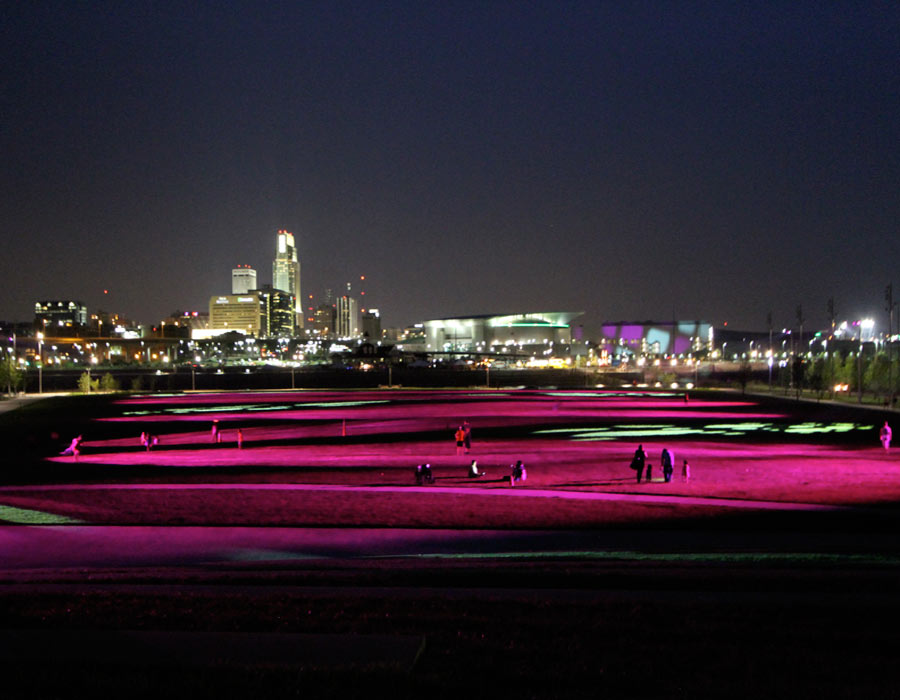
Swirling patterns originate on the Great Lawn but also sometimes get projected across the Missouri River onto Omaha’s convention center.


photo © John Jenkinson

photo © John Jenkinson
Special thanks to our great project team:
Lisa Passamonte Green, Mike Mahlum Visual Terrain
Chris Barbee, John Jenkinson Bandit Lites
David Beaudry Beaudry Interactive
Brad Haynes (programming)
Greg Jones Martin Entertainment
Gina Ford, Susannah Ross Sasaki Landscape Architecture
Brian Yessian Yessian (music for opening event and video)
Rich Sorich Iowa West Foundation (commissioning agency)
Larry Foster (City of Council Bluffs)
